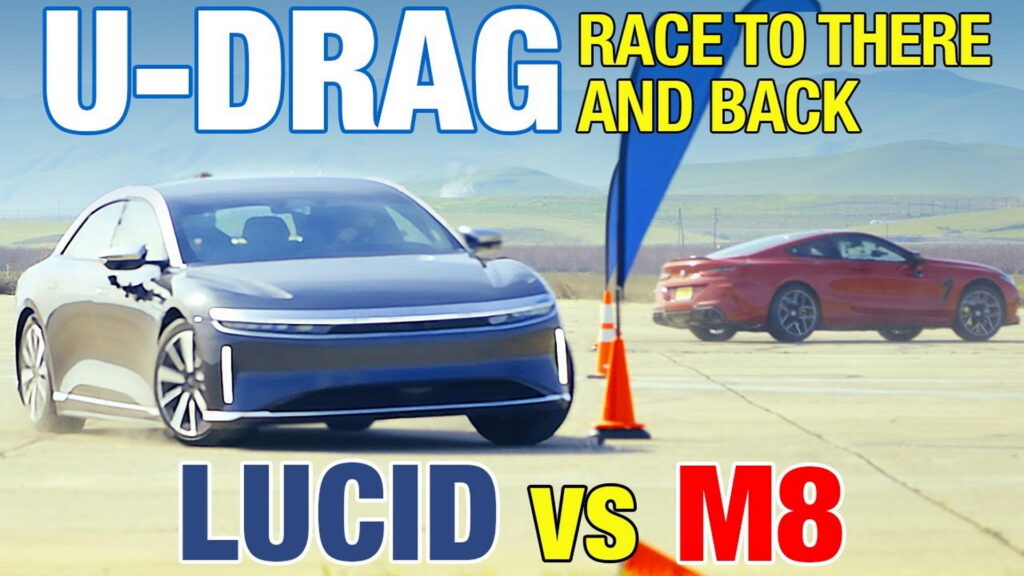Place your bets on whether twin turbo V8 speed or over 800 electric ponies will take the checkered flag
4 hours ago
 –>
–> 
by Stephen Rivers
–>
A few decades ago few would’ve believed just how far automotive technology has come. The BMW M8 Competition and the Lucid Air Grand Touring are two exceptional examples. Each is a bit of a bookend on the transition toward an all-electric future but which is faster today?
A U-drag race is exactly what it sounds like. Two cars line up just as they would in a traditional drag race but instead of simply finishing a quarter mile after they begin, they have to slow down, turn around and see who can make it back to the start line first. In effect, the race tests acceleration, braking, and handling in one simple format.
To that end, it’s a great chance to see how cars stack up whether they’d be cross-shopped or not. The BMW is down in two important ways here. Its twin-turbo V8 makes 617 hp (460 kW) and 553 lb-ft (748 Nm) while the Lucid develops 819 hp (610 kW) and 885 lb-ft (1198 Nm) with its all-electric setup.
More: How Much Quicker Is The Corvette Z06 Than The Standard C8?
Many are familiar with the way that many electric vehicles often rocket off of the line and the Lucid Air GT does that too. It’s still not as quick as the BMW though and much of that comes down to how heavy the two cars are. The German tips the scales at 4,295 pounds (1,948 kg) while the American weighs 5,226 pounds (2,370 kg).
advertisement scroll to continue
That discrepancy factors into both races as the BMW might not have as much power but it stops quicker, turns quicker, and then has enough grunt to keep a gap on the Lucid through the finish line. The drivers believe that the Lucid might not be providing full power from the get-go and it’s clearly worse at braking and cornering.
Cars sure have come a long way over the years but for now, gas-powered rocketships like the M8 Competition can still hold their own. We wonder how a Lucid Air Sapphire would’ve done.
[embedded content]
 –>
–> 